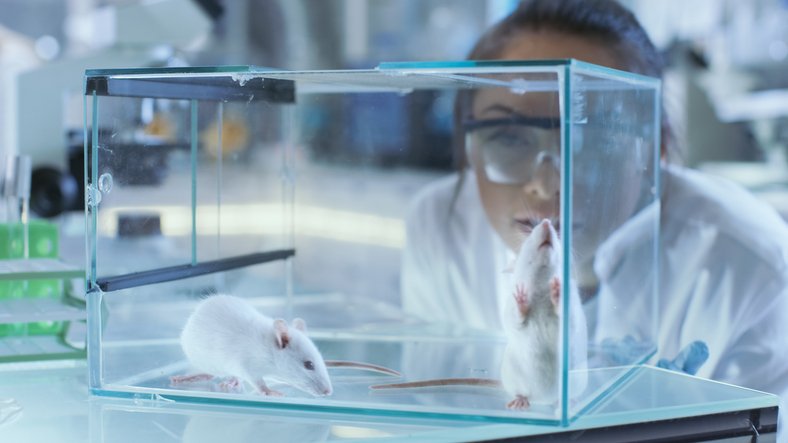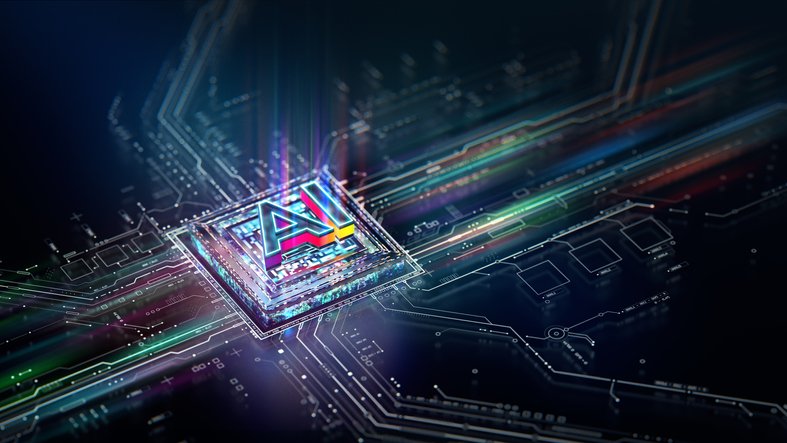The use of animals in science research has a long-storied history of success; almost every modern-day medical drug or treatment was either first developed or discovered through the use of animals. Living organisms, especially mammals, are the most complex systems we know in the universe. The mammalian brain has billions of cells and trillions of connections, which in turn are made up of even more proteins. There’s no doubt that understanding the physiology of these complex systems is difficult.
Recently, the National Institutes of Health (NIH) announced that they are creating a new office, the Office of Research Innovation, Validation, and Application (ORIVA), to help reduce animal research. This is a pivotal shift away from animal-based research, which the NIH has historically funded, and in contradiction to most of the various NIH institute missions. The details of this new office and how this will affect funding decisions are not clear, but the rationale is based on new technologies that allow testing of drugs directly in human cells and other noninvasive technologies that include artificial intelligence.
This follows a similar announcement from the FDA that it was phasing out animal testing for certain new therapies. The new Health and Human Services Secretary Robert F. Kennedy, Jr., defended this in a recent congressional hearing, claiming that “we can accomplish a lot of those goals on safety and efficacy with AI technology.”
Strict guidelines regarding animal care
Almost every scientist I know is an animal lover who cares deeply and acknowledges the grave responsibility of using animals in research. The portrayal of uncaring scientists going about their work without any thought for the animals being used in their research is far from the truth. I suspect that many nonscientists do not know how animals are cared for in the laboratory setting. The use of vertebrates in the laboratory, especially mammals, has strict guidelines that investigators have to follow, which are dictated by federal laws.

Indeed, any animal protocol has to go through an independent animal ethics committee (in the United States it’s called the Institutional Animal Care and Use Committee) to be approved for use, and universities routinely undergo independent inspections in order to be accredited to conduct animal research. Labs and universities that do not abide by these laws can face steep fines and sanctions. These guidelines are there to minimize the discomfort and pain of animals—every protocol needs to be justified in making sure there are no alternatives to putting an animal through an experiment that will potentially cause distress.
Dedicated animal technicians and certified veterinarians monitor lab animals around the clock. These animals have better care than most of our pets! Incidentally, much of the so-called indirect costs of NIH grants that go to universities are used to cover the cost of animal care.
There are also many animals used in research that may not get as much press as mice and nonhuman primates. Indeed, several Nobel Prizes in medicine have been given to researchers using worms (C. elegans) and fruit flies (D. melanogaster). This is because much of the DNA and fundamental building blocks of cells are conserved between humans and all animals.
One particular process, called RNA interference, was discovered in worms. RNA is the intermediate between genes/DNA and protein; if you can manipulate RNA, then you can regulate protein expression in cells. Scientists have now harnessed RNA interference to treat human diseases, with four treatments currently approved by the FDA and more in clinical trials. Similarly, one of the few treatments for a devastating neurological disease called spinal muscular atrophy is treated by a molecule that alters the RNA produced by the defective gene that is responsible for the disease. It should be noted that these RNA-based therapies, including mRNA vaccines, are on the cusp of treating many chronic human diseases, yet the NIH has paused or halted funding some of these RNA-based therapies recently for no discernible scientific reason.
To be clear, there is no replacement yet for animal research in biomedical science. Breakthroughs in stem cell technologies that allow differentiation of human cells into many different cell types have granted unprecedented access to human biology, and newly developed 3D organoid models are rapidly replicating certain aspects of organ function.
However, the methods used to turn regular human cells back into stem cells that are then reprogrammed into complex cells like neurons suffer from potential artifacts that mean they are not the same as primary cells in intact tissues. Thus, it remains to be seen how faithfully these reprogrammed cells and organoids mimic various complex biological processes.
Reductionist systems can only go so far
These reductionist systems can also only go so far—for example, cells in a dish do not form complex and specific neural circuits in the brain, and we obviously cannot test cognition or behavior. Some of the hardest human diseases to treat are complex psychiatric disorders such as schizophrenia and depression. Not only are these diseases diagnosed clinically by behavioral changes, but we are also now finding that many mental health disorders can be influenced by unexpected factors outside of the brain itself, such as the gut microbiome and the immune system. There is just no way to model these inter-organ factors in a dish.
Organoids also do not recapitulate the complex development of organs or the changes that occur over the lifespan of an animal. Indeed, the biggest risk factor for many diseases, such as Alzheimer’s disease, is aging. We still do not fully understand the complex nature of how or why cells age and the multi-factorial impacts of the environment on the development of human diseases.

That’s not to say improvements in non-animal research will fail to be of benefit. Not all animal research readily translates to human biology, and precisely how molecules act in human cells is not always obvious from animal research. There is no perfect model, just the best model to address a specific question. For example, my lab works on how memories are stored in the brain at the molecular level. We know that certain genes get turned on when we learn, but to understand what the proteins they code for do is a complicated question. We use cells isolated in a dish to study protein dynamics and localization. This helps inform studies we can do in vivo in the intact brain.
We now have tools to image inside the mouse brain and study brain activity and even proteins. These techniques are relatively noninvasive; we make a small hole in the skull under anesthesia and place a glass window on top. Once the mice recover, they suffer no discomfort or adverse effects: mice, like humans who have pacemakers or brain electrode implants, do not have pain receptors in the brain itself. We can also express molecules that help manipulate neuronal activity, such as light-sensitive receptors that get switched on when we shine a specific wavelength of light through the window in the skull.
At the same time that we image the mouse brain, we can study its behavior and how memories are organized in the brain. Understanding these “nuts and bolts” of brain function is key to knowing how to treat neurological diseases, similar to knowing how the engine of a car works allows the mechanic to fix it.
Again, there is no room for the mistreatment of animals, and scientists must make every effort to minimize the number of animals used in their experiments. While new technologies are on the horizon that will help provide access to human biology without the need for animals, the reality is that we cannot truly comprehend the complexity of biology without animal research. There may come a time when we have accumulated enough knowledge and insight from animal research to “train” AI and sample huge databases to develop drugs that bypass the need for testing in animals. Indeed, there are many new companies that are already trying to harness large cell atlases and imaging data, such as Recursion.
However, these technologies are nascent and unproven. We also do not know enough about biology to know where real breakthroughs will come. For example, the current weight treatment drugs, such as Ozempic, were developed out of research investigating novel molecules isolated from Gila monsters.
Finally, it should also be noted that research on animals is also the basis for improved veterinary care of our pets and farm animals. Critical funding for animal research must continue today, but with a forward look to incorporating emerging non-animal technologies that can, in tandem, help move biomedical science forward.
Jason Shepherd, PhD, is a professor in the department of neurobiology and holds the Jon M. Huntsman Presidential Endowed Chair at the University of Utah. The views represented in this article are his personal views and should not be taken to represent the University of Utah.
The post Why We Still Need Animal Research in a World of AI and Organoids appeared first on GEN – Genetic Engineering and Biotechnology News.



